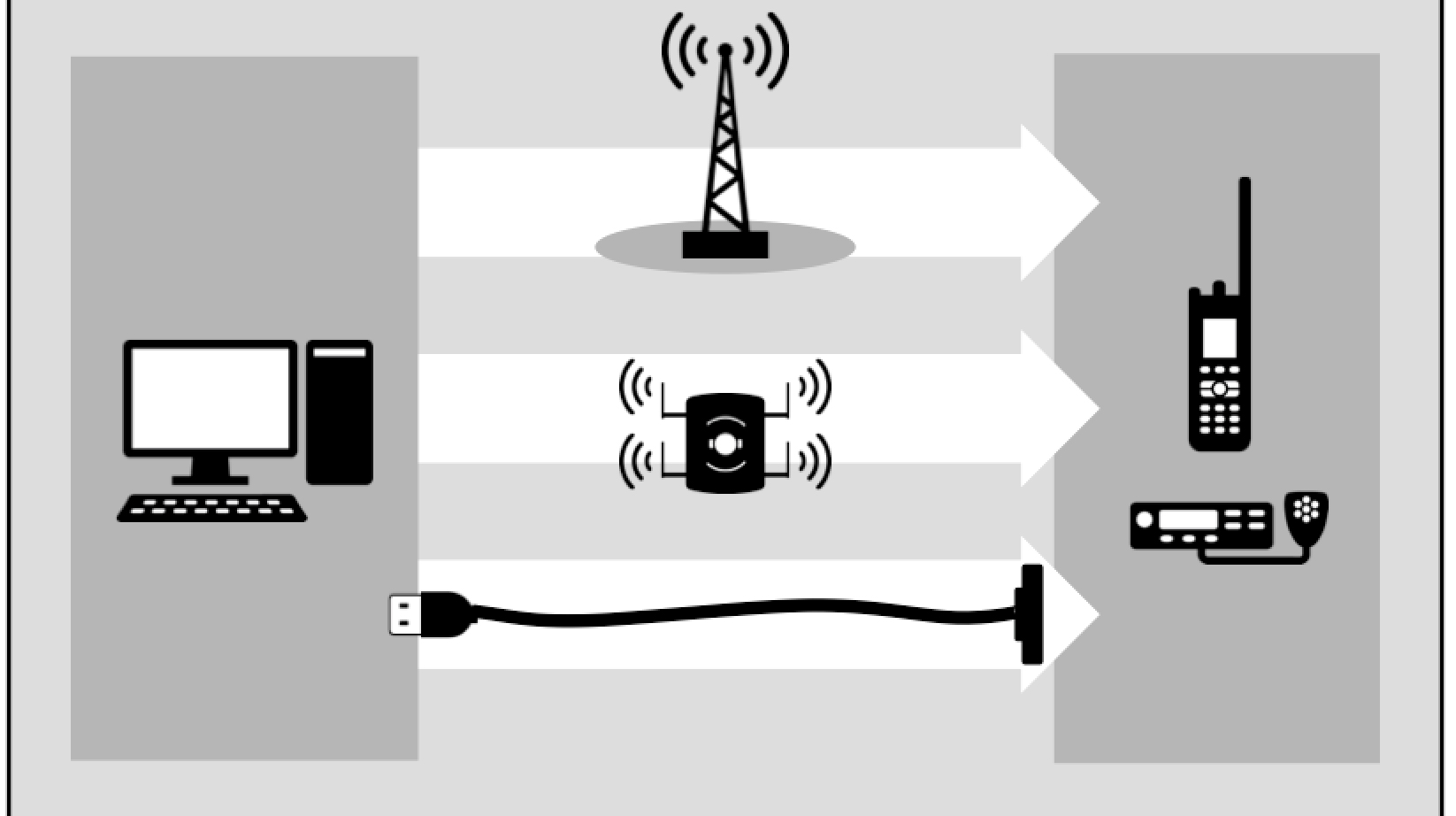Preparing your workforce for a fire can mean the difference between life and death. At the end of the day, you’re responsible for keeping your employees safe, which is why emergency management strategies, like fire drills, are a must-have for any organization.
Fire drills aren’t just for school kids
According to the United States Fire Administration, there were about 108,500 nonresidential building fires (which include commercial buildings such as office buildings) from 2017 to 2019. Within that same timeframe, 1.2 million fires broke out across the U.S., resulting in 3,700 casualties and 16,000 injuries. Considering what amount of these were in nonresidential buildings, the need for fire drills is clearly evident.
The first step of fire safety is knowing how to create a fire plan, which includes fire drills, so all employees know what to do. Though they might seem like an annoyance that breaks up the middle of a work day with a loud, ear-piercing alarm, they’re the only defense your employees will have in the event of an on-site fire.
What’s a fire drill?
A fire drill is a necessary element of any emergency management plan, and is essentially a “practice run” of your fire plan.
When a drill is triggered, the warning comes in the form of an alarm, a strobe, or a repeating announcement that comes over a loudspeaker system throughout a building. Though the types of buildings and the individuals inside may differ, the point of the drill remains the same: when the alarm system is activated, the building must be evacuated of all personnel at the nearest available, safest exit point.
Fire drill systems must be checked regularly in order to ensure they’re still working properly and, typically, are assessed by a trained Fire Marshal. Before creating your fire plan, it also helps to have a Fire Marshal inspect the building or campus and strategize the best evacuation plan in the event of an actual fire.
Drills aren’t just “nice to have,” either. Depending on the type of building, what it is being used for and your location, drills are usually required under local fire regulations.
Having at least one fire drill a month is a common regulation in most jurisdictions, especially for hospitals and schools. Initiating monthly fire drills in any organization helps keep the information fresh, while also covering your bases if new employees come on board and haven’t experienced the drill before.
Preparing for potential fires
While running fire drills is usually for fire response, monthly drills can also bolster employee response time in any type of emergency situation where evacuation is the safest option. This includes active shooter events, power outages, burst pipes, or other threatening in-house situations that may occur.
Once a fire drill is established and employees know their evacuation plan, it gets easier to conduct drills effectively and with greater success. This way, if an actual emergency occurs, the likelihood of success in the event of an actual emergency increases.
Of course, the first step to running successful fire (and other emergency management) drills is to have a solid plan in place.
Step #1: Assess the potential risks
When it comes to creating a strong fire drill and evacuation plan, it’s critical that you are aware of any obstacles your employees or anyone on site will face. This includes things like gas lines, broken doors, high-rise stairwell access, disability safety, campus size, etc. You want to make sure that employees know the fastest and safest route to avoid a fire — especially if they are in a location of the building that could be highly impacted.
From here, you can create a plan that takes those risks into account.
Step #2: Assess your assets
In the event of a fire, you’ll likely need a few things: fire extinguishers, working alarms, first aid kits and even axes. Make sure to check your current assets — and ensure that all fire extinguishers and alarms have been recently serviced. Again, this is where your Fire Marshal assessment and regulations will come into play. It also helps to have a critical communication and collaboration tool like Rave Collaborate that can house multiple emergency protocols, compliance and coordination resources.
Step #3: Ensure a mass notification system is in place
If a fire starts on your property, the hope is that smoke alarms will notify everyone within a building in a timely fashion. Unfortunately, this is not foolproof — it can take time for a fire to create enough smoke for a detector to go off.
That’s why, during a fire, a mass notification system like Rave Alert can help save lives. With a notification system, employees can trigger an alert that is sent to multiple touchpoints — from internal alarms, computers and cellphones so that everyone is aware of the fire. A mass notification tool may also provide storage for evacuation routes and building blueprints, making it easier for people to find an evacuation route.
Step #4: Have a plan for emergency response
While the first goal is always to get everyone out safely, the fire will still need to be put out. Therefore, communication with firefighters and emergency response personnel is critical. Again a critical communication tool like Rave AppArmor can be incredibly helpful here, as it allows staff to notify emergency responders and for those responders to see what’s happening in real-time. Reponders can also access relevant location information, initiate two-way conversations and ensure that everyone on-site is safe through tools like Rave 911 Suite.
Fire and emergency management for any organization
Fires and emergencies can happen anywhere, at any time. That’s why fire drills are so important in any workplace — regardless of industry or size. Whether you work in a corporate office or a hospital or school, fire drills are a necessary factor in keeping everyone safe. Aside from businesses and corporations, fire drills are also necessary for:
K-12 schools & higher education
Use a fire drill to protect faculty, staff and students. Conducting monthly drills (usually required in most in schools) helps establish on-site coordination during an emergency. This may look like running different drills for different grades, or an entire school evacuation. It can also mean creating slight variations in the plan to account for hazardous weather situations or active shooters.
Mass notification solutions on campuses where there are multiple buildings can also ensure that everyone is on the same page, without worrying about alarms or personnel running back and forth.
Hospitals
Conducting fire drills in a hospital or medical setting gives the staff the opportunity to care for patients (and evacuate them) in the event of a fire or emergency. A hospital has many moving parts, and some individuals inside may not be able to evacuate themselves. Because of this, on-site coordination is important to establish and practice. In many instances, a full evacuation is not performed if it can be avoided, and hospital staff must temporarily relocate patients away from the immediate area of the fire or risk to their safety.
Sending out real-time updates during the event, along with emergency protocol reminders, can save lives while not disrupting care.
State and local governments
A prepared community is a safe community, and being prepared begins with effectively communicating information about fires and different emergencies.
Because of the large size of most communities, a critical communication system is needed to deliver this information in real-time and across multiple mediums. If a building or wildfire starts, for instance, notifying people in your community to prepare for evacuation can save lives. This is made much easier with a mass communication or location-based alerting tool, than through traditional methods of radio or television alone.
Keep everyone safe with proper emergency management
Fires aren’t the only thing that can happen in your office or organization. Severe weather, workplace violence, power outages and even civil unrest can impact your employees’ safety — and the safety of anyone else inside your building.
This is why emergency response plans, like fire drills, need to be implemented and practiced frequently. It empowers everyone to control what they can during an emergency. Plus, the more your employees or staff practice their drills, the less likely they are to panic in the event of a real fire or other emergencies.
Of course, beyond implementing emergency plans, it helps to provide your staff with a critical communication tool that lets them alert one another — and the authorities — during or preceding an emergency. We believe that safety is a collaborative responsibility, which is why we’ve created solutions that connect your employees (and anyone in your buildings) to the resources they need to keep themselves safe.
Through an easy-to-use, easy-to-implement critical communication and collaboration platform, it’s easier than ever to keep your employees safe. For more information, or to schedule a demonstration of our critical communications system, visit our site.





Comments are closed here.